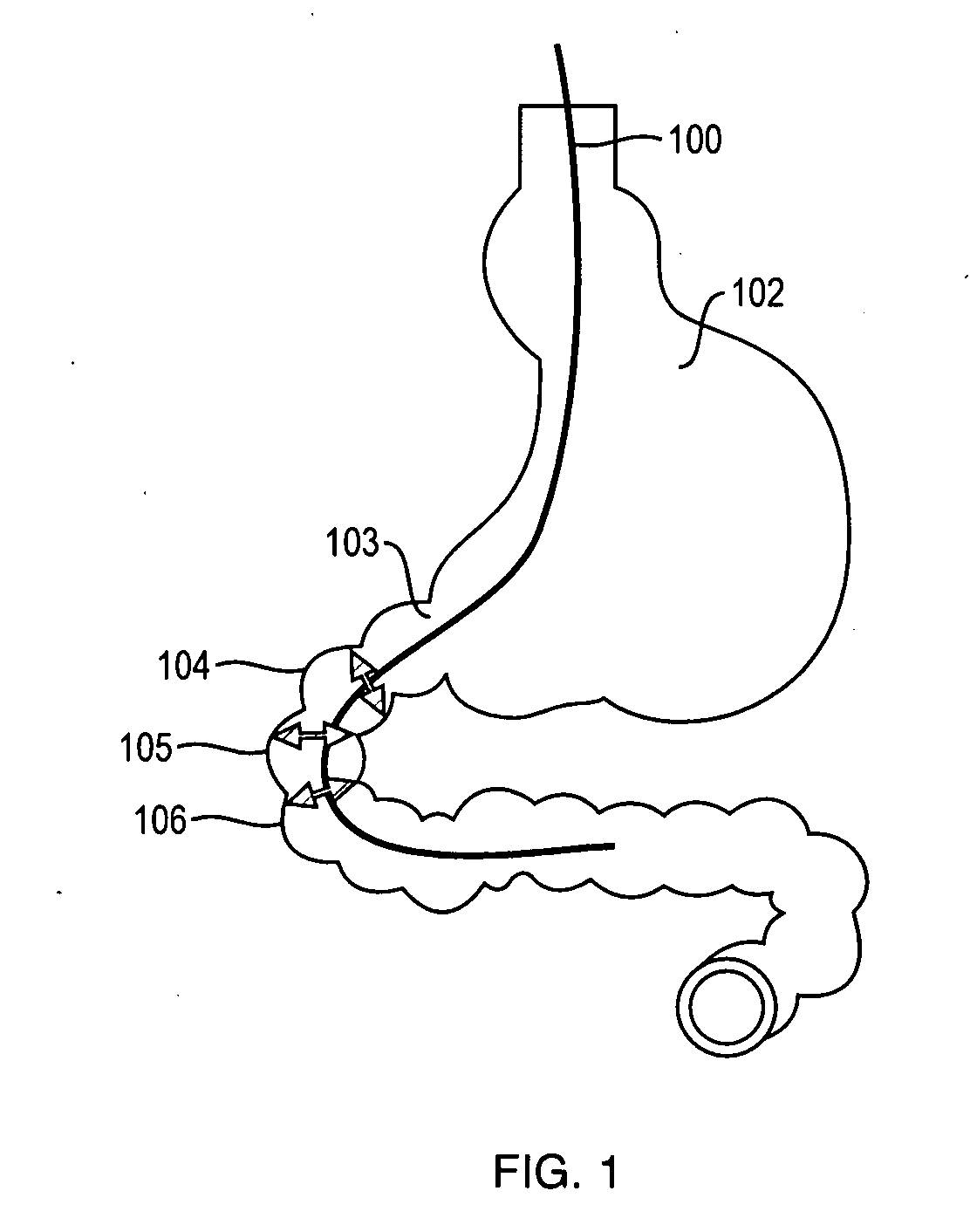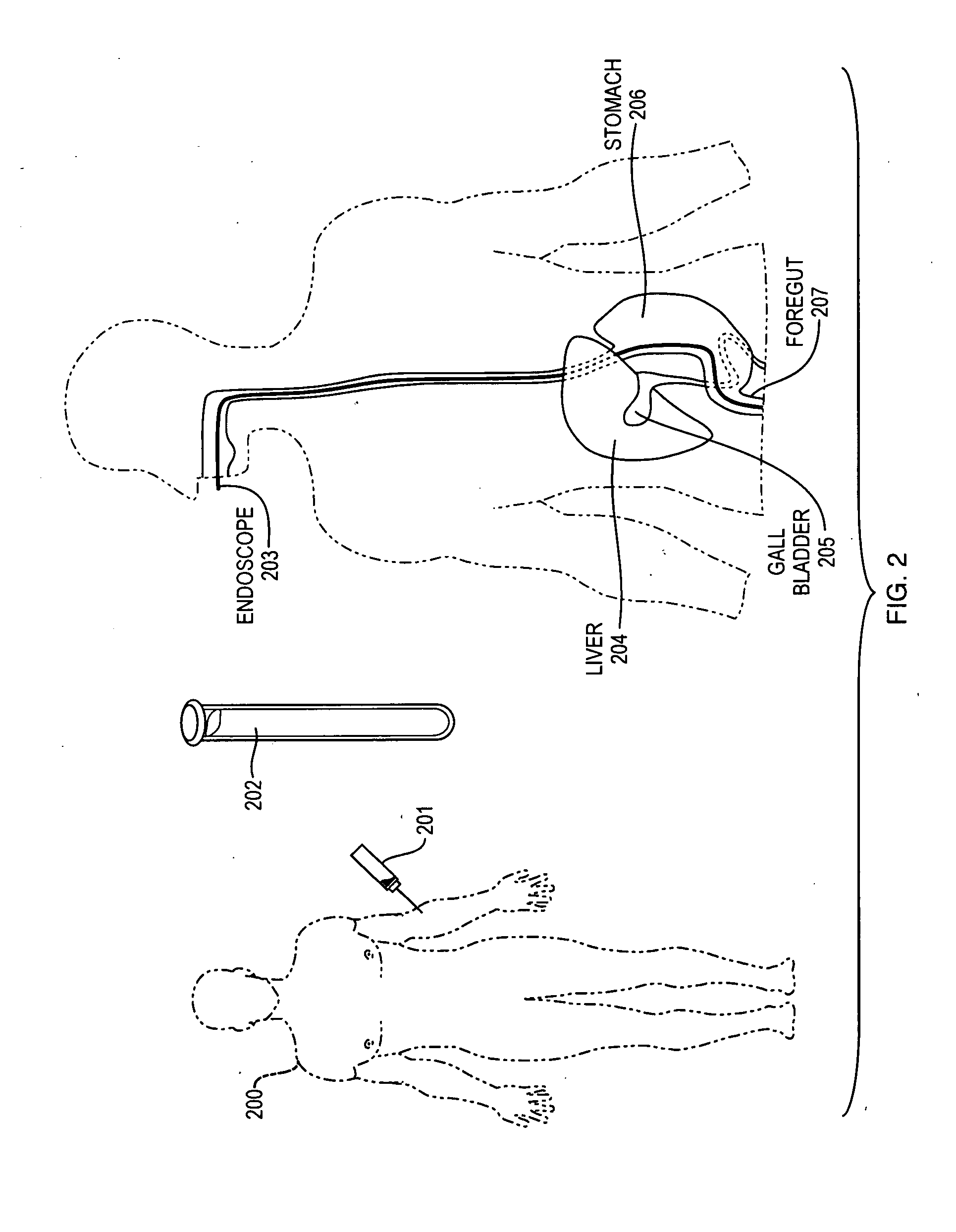Adult and neonatal stem cell therapy to treat diabetes through the repair of the gastrointestinal tract
a stem cell and adult-to-neoplasm technology, applied in the field of treating diabetes, can solve the problems of insulin resistance in susceptible individuals, improper stimulation of the foregut during food digestion, and cells that are insulin-resistan
- Summary
- Abstract
- Description
- Claims
- Application Information
AI Technical Summary
Benefits of technology
Problems solved by technology
Method used
Image
Examples
Embodiment Construction
[0030]T2D can be reversed through the repair of the duodenum by injecting concentrated nucleated cells from various sources directly into the wall of the duodenum through an endoscopic procedure. This procedure can be combined with introducing a portion of the treating composition into the portal vein and or duodenal artery through a catheter based procedure. This procedure should 1) reset / repair the proper function of digestion and metabolite production in the duodenum and 2) repair of the nerve endings of the portal vein. The result will be an improvement in establishing normal glucose levels, support for the regeneration of the insulin producing capacity of the pancreas, improvement in insulin resistance, and the re-establishment of hunger suppression signals in response to food intake. Consequently, the therapy should be effective for both T2D and the co-morbidity of obesity associated with T2D.
[0031]The progression of T1D can be halted prior to the destruction of the pancreas b...
PUM
 Login to View More
Login to View More Abstract
Description
Claims
Application Information
 Login to View More
Login to View More - R&D
- Intellectual Property
- Life Sciences
- Materials
- Tech Scout
- Unparalleled Data Quality
- Higher Quality Content
- 60% Fewer Hallucinations
Browse by: Latest US Patents, China's latest patents, Technical Efficacy Thesaurus, Application Domain, Technology Topic, Popular Technical Reports.
© 2025 PatSnap. All rights reserved.Legal|Privacy policy|Modern Slavery Act Transparency Statement|Sitemap|About US| Contact US: help@patsnap.com


